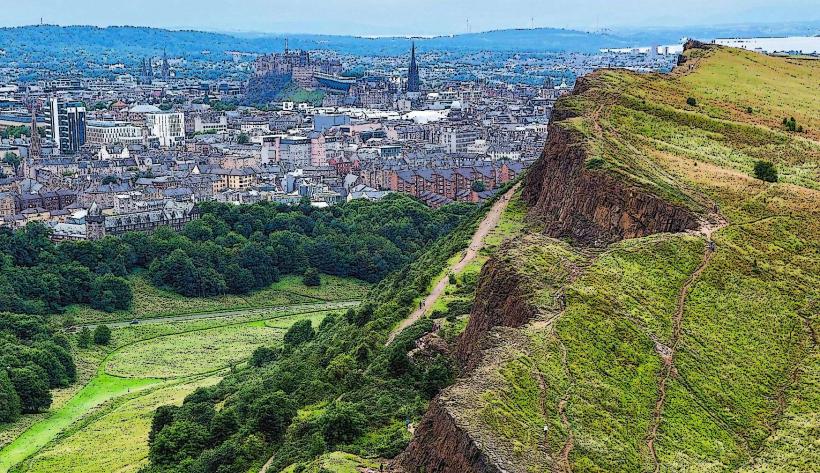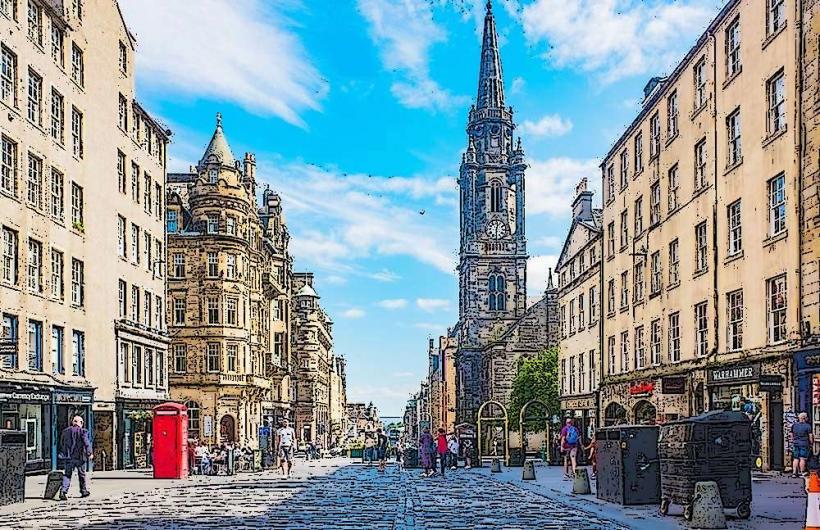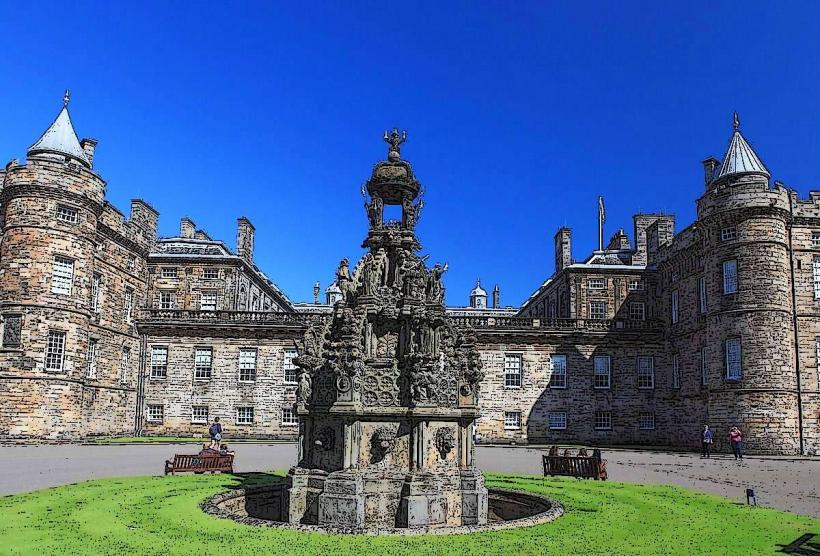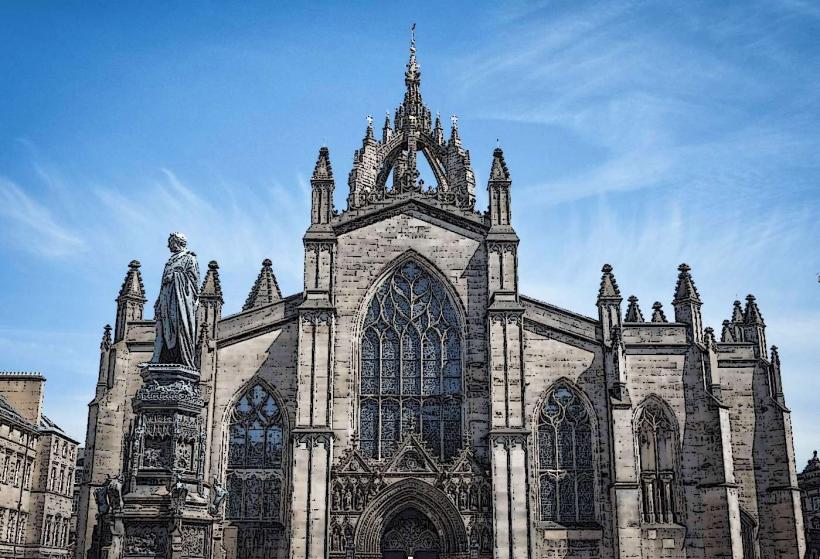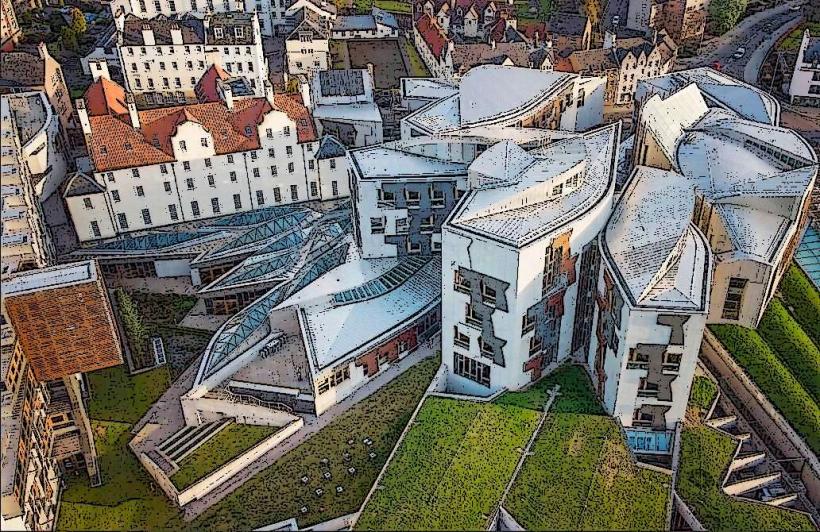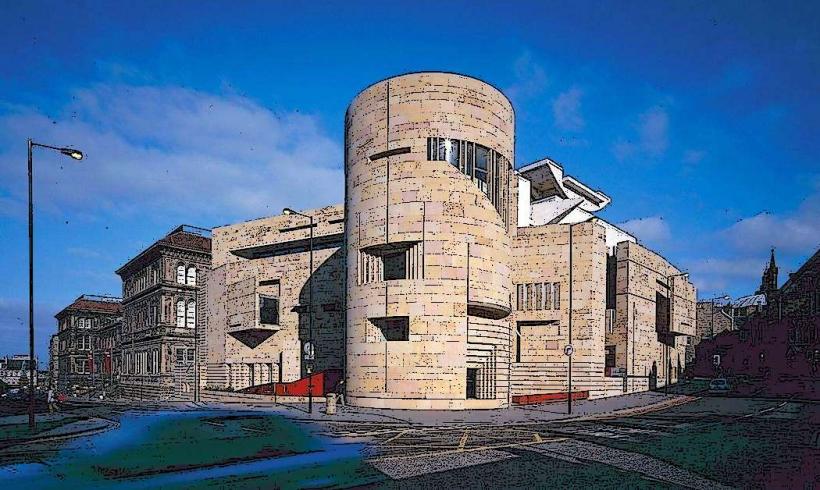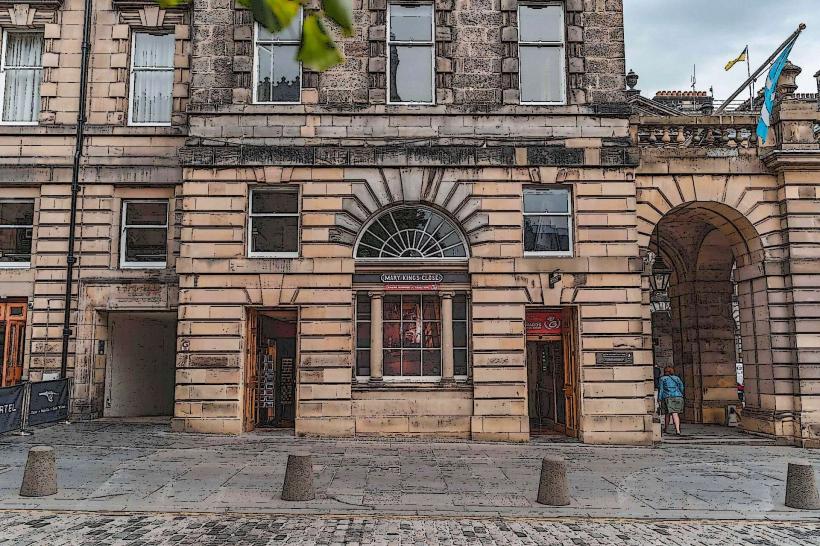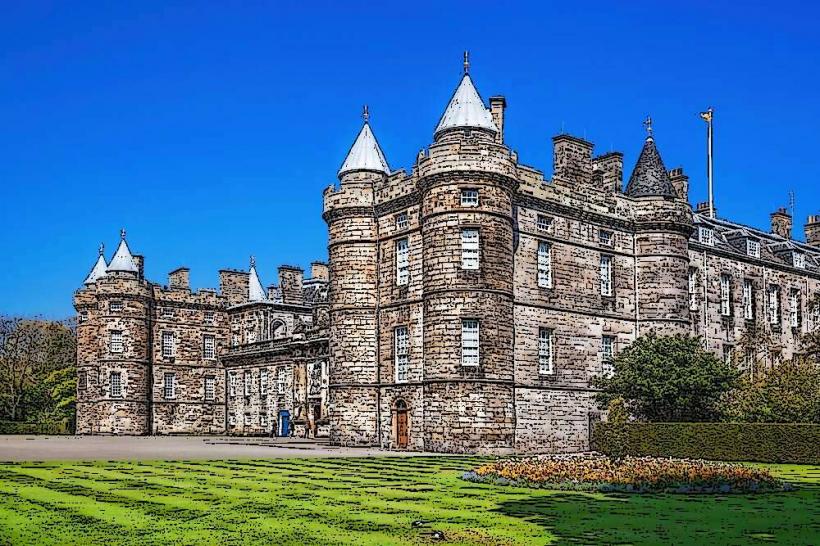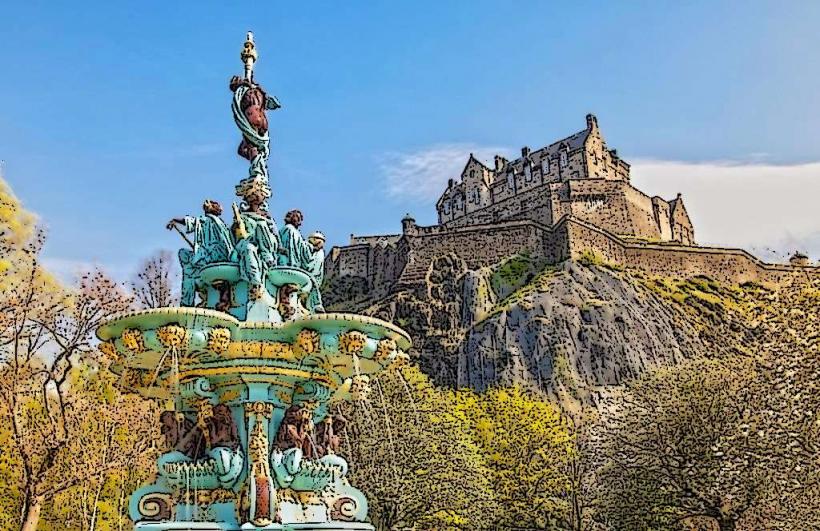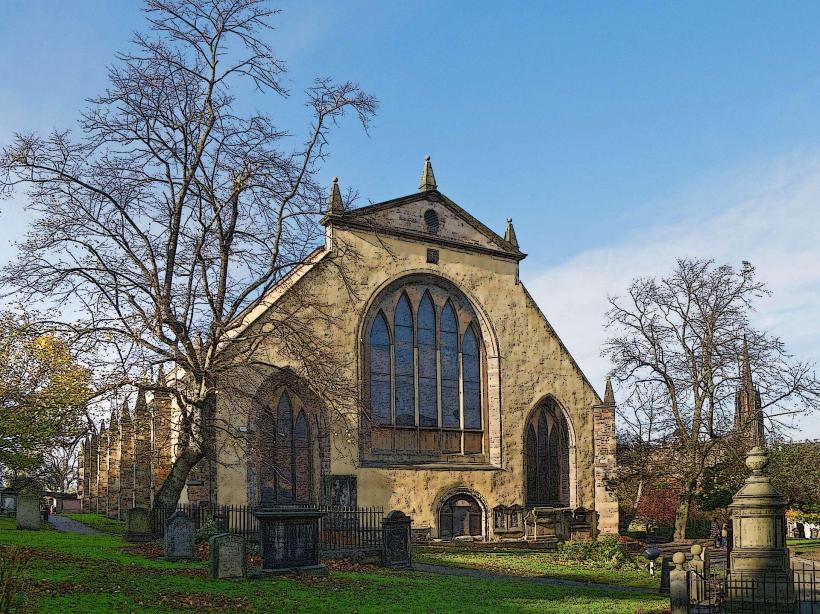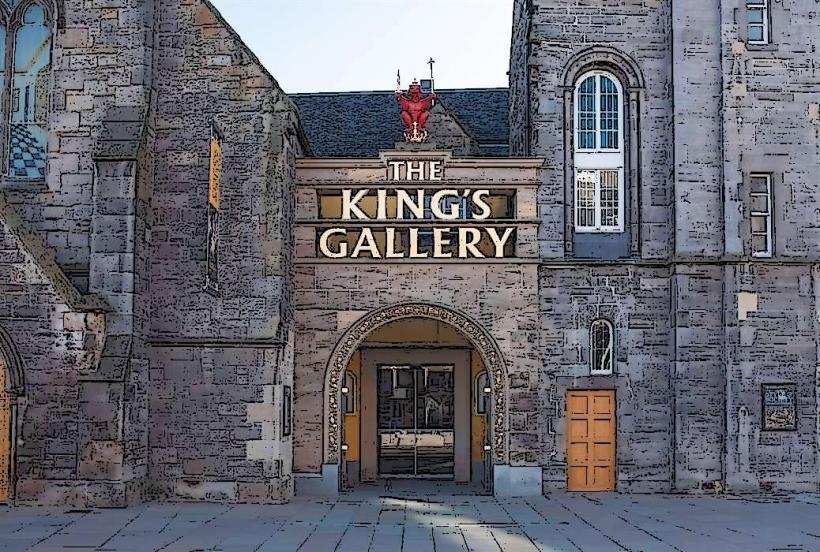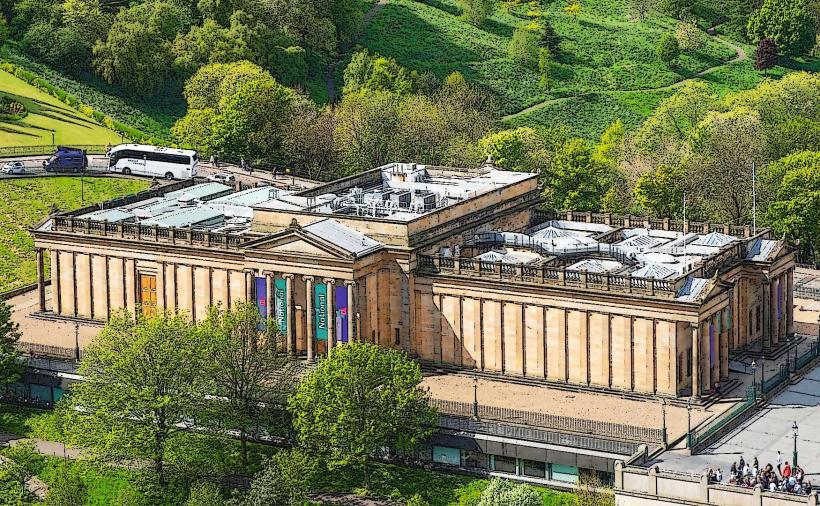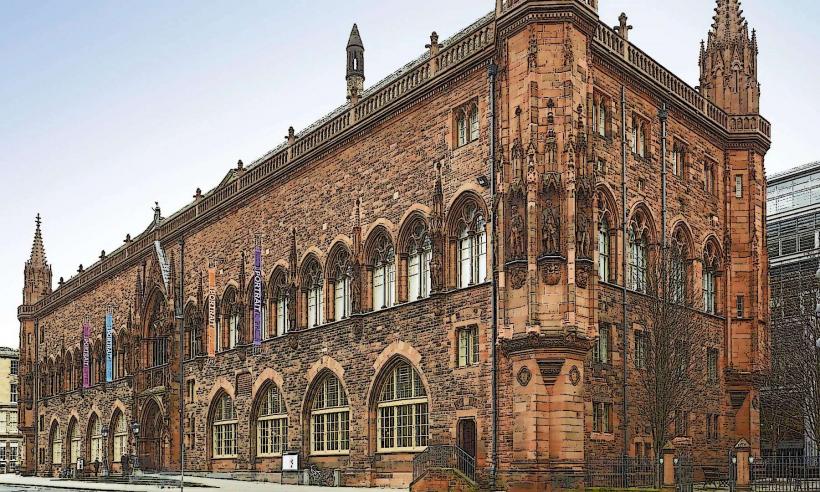Information
Landmark: Edinburgh CastleCity: Edinburgh
Country: United Kingdom
Continent: Europe
Edinburgh Castle is one of the most iconic landmarks in Scotland and a symbol of its rich history and heritage. Perched atop Castle Rock, an extinct volcanic rock formation, the castle overlooks the city of Edinburgh and has played a central role in Scottish history for over a thousand years. The castle is a UNESCO World Heritage Site and remains one of the most visited tourist attractions in Scotland.
History of Edinburgh Castle
Early History and Origins
The origins of Edinburgh Castle can be traced back to prehistoric times, as the Castle Rock was a strategic location for ancient settlers due to its commanding position over the surrounding area. The first evidence of a structure on Castle Rock dates back to at least the Iron Age (around 2,000 years ago), with archaeological evidence suggesting the site was fortified by early tribes.
The castle as we know it today began to take shape in the 12th century. David I, King of Scotland, is believed to have established the first royal residence at Edinburgh Castle around 1130, though the site had been used for various purposes before that.
Medieval and Early Modern Periods
Over the centuries, Edinburgh Castle became a royal stronghold and a symbol of Scottish power. It witnessed numerous battles, sieges, and royal events. It was central to the Scottish Wars of Independence, particularly during the reign of Robert the Bruce in the early 14th century and in the conflict with England.
The castle served as a royal residence for many Scottish kings and queens, including Mary, Queen of Scots, who gave birth to her son, James VI of Scotland (later James I of England), within the castle walls in 1566.
Oliver Cromwell's forces seized the castle in the 17th century during the English Civil War, and it remained under English control for a time. After the monarchy was restored in 1660, Edinburgh Castle became a symbol of royal authority once again, although its military role increased significantly as time passed.
The Jacobite Risings
- One of the most notable periods in the castle’s history was its involvement in the Jacobite Risings. In 1745, Bonnie Prince Charlie attempted to claim the Scottish throne from the House of Hanover, but the British army eventually defeated the Jacobites. Edinburgh Castle was used as a stronghold by British forces during this period, and the final Jacobite threat was quashed in 1746 after the Battle of Culloden.
Post-Jacobite and Modern Period
After the Jacobite rebellions, the castle's role as a military fortress increased. It became a symbol of British control over Scotland. The fortress continued to house military garrisons and played a role in both World Wars.
In the 19th and 20th centuries, Edinburgh Castle became a key symbol of Scotland’s national identity. It also became a popular tourist destination, with its historical significance and stunning architecture attracting visitors from around the world.
Architectural Highlights and Key Features
Edinburgh Castle is not only historically significant but also a remarkable example of Scottish military architecture. Over the centuries, the castle complex expanded and adapted to meet the needs of its inhabitants and military garrisons.
1. St. Margaret’s Chapel
- The oldest building within Edinburgh Castle is St. Margaret’s Chapel, a small and humble structure built in the early 12th century by King David I in honor of his mother, Saint Margaret of Scotland. The chapel is a beautiful example of Romanesque architecture and remains an active place of worship today. It is one of the most beloved sites within the castle.
2. Edinburgh Castle Walls and Gates
- The castle's fortifications are impressive, with massive walls and gates protecting the castle from enemy attacks. The Portcullis Gate is the main entrance to the castle, where visitors are greeted by the sight of the castle's towering walls. The outer ramparts, defensive walls, and numerous gun emplacements make it clear that Edinburgh Castle was designed to be a formidable fortress.
3. Crown Jewels of Scotland
- One of the most famous attractions inside the castle is the Crown Jewels of Scotland, which includes the Crown, Sceptre, and Sword of State. These royal regalia are part of the Scottish monarchy’s treasures and are displayed in the Crown Jewels Room. The Crown was used in the coronation of Scottish monarchs and was an important symbol of the country’s royal sovereignty.
4. The Stone of Destiny
- The Stone of Destiny (or Stone of Scone) is another key artifact housed at Edinburgh Castle. This ancient stone was historically used in the coronation of Scottish kings and later became part of the coronation ceremonies of English monarchs. The stone was taken to England in 1296 by King Edward I but was returned to Scotland in 1996, where it is now on display in the castle.
5. The Great Hall
- The Great Hall of Edinburgh Castle is one of its most striking rooms. Built in the late 15th century, it was used for royal events, feasts, and ceremonies. The hall features an impressive wooden ceiling, period furnishings, and exhibits that showcase the castle’s royal past. It is often used for state events and functions.
6. National War Museum of Scotland
- Edinburgh Castle is also home to the National War Museum of Scotland, which showcases an extensive collection of military artifacts, including weapons, uniforms, and displays relating to Scotland's military history. Visitors can explore items from the World Wars, Jacobite rebellions, and the castle’s role as a military stronghold.
7. Mons Meg
- A particularly striking feature of Edinburgh Castle is Mons Meg, a massive medieval cannon that was used in the 15th century. Mons Meg is one of the largest cannons ever built and could fire stones weighing up to 150 kg (330 lbs). The cannon was used during sieges and is now displayed near the castle’s walls.
8. The Royal Palace
- The Royal Palace of Edinburgh Castle, which was the residence of the Scottish kings and queens, is another important area within the castle. Visitors can explore the rooms where monarchs, including Mary, Queen of Scots, lived. The rooms are beautifully restored, and many original pieces of furniture and decoration remain.
9. The Esplanade
- The Esplanade is the wide open space in front of the castle and serves as the main area for ceremonies and military parades. It is also where the famous Royal Edinburgh Military Tattoo takes place each summer, a spectacular event featuring military bands, performances, and displays of Scottish tradition.
Edinburgh Castle Today
Today, Edinburgh Castle serves as a major tourist attraction, drawing millions of visitors each year. It offers a fascinating glimpse into Scotland's history, from ancient battles to royal traditions. The castle provides visitors with a unique experience, blending its historical significance with the stunning views it offers over the city and beyond.
Visitor Experience
Visitors can explore the castle's extensive grounds and discover its many historic sites, from the Crown Jewels to ancient military artifacts. The audio guides and interactive exhibits offer an engaging way to learn about the castle’s history.
The castle’s location, atop Castle Rock, provides panoramic views of Edinburgh, including views of the Royal Mile, Holyrood Palace, and the surrounding hills.
Events and Festivals
Edinburgh Castle is also a key venue for a number of events and festivals, most notably the Royal Edinburgh Military Tattoo, which takes place each summer on the castle’s Esplanade. The event features military bands, dancers, and performers from around the world.
Throughout the year, the castle hosts various exhibitions, historical reenactments, and commemorations, which further enhance the visitor experience.
Conclusion
Edinburgh Castle stands as a testament to Scotland’s rich history and heritage. From its strategic position on Castle Rock to its important role in the country’s military and royal past, the castle is a key symbol of Scotland’s identity. It remains one of the most significant and popular attractions in Edinburgh, offering visitors a unique insight into Scottish history, culture, and tradition. Whether you are interested in exploring the castle’s ancient walls, learning about its royal history, or enjoying the stunning views of the city, Edinburgh Castle is an unforgettable destination.

